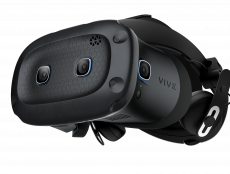
Distance education, correspondence, online learning, computer assisted instruction, interactive multimedia instruction, or technology based learning – whatever you call it, for decades, educators have been striving to develop robust ways to deliver instructional materials at a distance. Why? The benefits are obvious: Teaching at a distance enables previously under-serviced populations to gain access to high-quality education and training. In a digital age, distance learning has emerged as a highly cost effective, interactive and engaging approach to training and education, but this was not always the case. The history of distance learning reveals that in the past instructional designers often leaned on one-to-many media formats, including many that failed to survive over time. Contemporary instructional designers, however, still have much to learn from past distance learning innovations, even those that were flawed and ultimately did not endure over time.
Radio and Television Learning
 For decades, distance learning took place via radio and television. Indeed, for much of the twentieth century, every region had broadcasting channels dedicated to delivering education at a distance. Given the widespread availability of radio and later television, these forms of distance learning were highly accessible and did not require the purchase of any special equipment on the part of the learner. They did have one major flaw. Radio and television are one-to-many forms of media. This meant that while instructors could be heard, students could never ask questions back (unless, of course, they sent a letter in the mail). In this respect, radio and television learning formats generally replicated the very worst conditions of on-site classrooms and had only limited potential to replicate the very best on-site classrooms.
For decades, distance learning took place via radio and television. Indeed, for much of the twentieth century, every region had broadcasting channels dedicated to delivering education at a distance. Given the widespread availability of radio and later television, these forms of distance learning were highly accessible and did not require the purchase of any special equipment on the part of the learner. They did have one major flaw. Radio and television are one-to-many forms of media. This meant that while instructors could be heard, students could never ask questions back (unless, of course, they sent a letter in the mail). In this respect, radio and television learning formats generally replicated the very worst conditions of on-site classrooms and had only limited potential to replicate the very best on-site classrooms.
PLATO (Programmed Logic for Automated Teaching Operations)
It is no surprise, then, that by the early 1960s, instructional designers were beginning to look to computers as a way to deliver engaging learning at a distance. The first prototype for what computer-assisted learning might look like was PLATO (Programmed Logic for Automated Teaching Operations), which was a system designed at the University of Illinois in the 1960s. Although PLATO was finally abandoned in 2006, many basic elements of today’s learning management systems were first launched via experiments with PLATO, including online forums, message boards, chatrooms, and remote screen sharing. PLATO did have one major problem. In the early 1960s, the system could only be accessed on campus at the University of Illinois. By the late 1960s, the “remote” element of the system was expanding (there was one computer at a high school in Illinois that was connected to the PLATO system). As time went on, PLATO’s remote capacities did expand, but until its last few years of existence, the system was marred by the fact that it was ahead of its time–in short, it was attempting to deliver a form of education that few users yet understood or could afford to adopt.
More One-to-Many Past Distance Learning Innovations
As most people now recognize, some media formats are more stable than other media formats. Many books from the 1500s continue to survive in shockingly good conditions (thanks to the high quality paper used at the time). Better yet, because books do not require any special hardware, they can still be read by anyone who knows how to read. By contrast, 8-track tapes from the late 1970s are nearly obsolete. Other recent obsolete formats include floppy disks, CD-Roms and laser discs. For at least a decade, however, the audio cassette was the wave of the future in distance learning. Like other past distance learning innovations, there is at least something to learn from the now obsolete audio cassette era.
Cathy Krakow, a retired professor of education, recalls how the trend came about: “In the 1970s to 1980s, there were many teachers returning to the school. This was a generation of teachers who had often certified in the 1950s to 1960s—many without getting a bachelor’s degree. By the 1970s, there was pressure to ensure all these teachers had at least a bachelor’s degree, so we created summer courses and evening courses for teachers but also correspondence courses, which were offered using different media formats.” Krakow emphasizes that at first, audio cassettes appeared very innovative: “For about a decade, I was recording my lectures on to audio cassettes and these would be sent to students all over the Midwest who were taking our courses. It now seems ridiculous! Those poor students sitting in their kitchens listening to my voice on a audio cassette, but at the time, it seemed very innovative.”
Floppy Disks to CD-Roms
 As audio cassettes were on their way out, many distance learning centers turned their attention to computer-based learning options. Early on, this frequently meant transferring printed materials to a floppy disk. While the floppy disks tended to take up less space than printed books, they had several limitations. First, not all distance learners had access to a computer in the age of the floppy disk and second, as we all know, the disks were quickly replaced by three quarter inch disks and the by other formats, including CD-Roms. However, just like audio cassettes, all of these formats would prove temporary. By the early 2000s, it was nearly impossible to find a computer upon which one could play a CD-Rom from the mid 1990s. Today, outside media archaeology labs, like the one Dr. Lori Emerson has established at the University of Colorado, accessing data on any of these formats is next to impossible.
As audio cassettes were on their way out, many distance learning centers turned their attention to computer-based learning options. Early on, this frequently meant transferring printed materials to a floppy disk. While the floppy disks tended to take up less space than printed books, they had several limitations. First, not all distance learners had access to a computer in the age of the floppy disk and second, as we all know, the disks were quickly replaced by three quarter inch disks and the by other formats, including CD-Roms. However, just like audio cassettes, all of these formats would prove temporary. By the early 2000s, it was nearly impossible to find a computer upon which one could play a CD-Rom from the mid 1990s. Today, outside media archaeology labs, like the one Dr. Lori Emerson has established at the University of Colorado, accessing data on any of these formats is next to impossible.
Lessons for Contemporary Instructional Designers
While one might consider many of these past innovations simply passé, contemporary instructional designers have much to learn from past distance learning innovations, even those that failed. First, one-to-many formats typically do not endure over time. This can be seen in the case of radio and television formats and audio cassettes. Second, introducing a new format (e.g., PLATO’s introduction in the 1960s) can be a mistake. In essence, timing is essential–your users need to be familiar with and able to afford the format in question. For this reason, today’s instructional designers may want to consider whether or not the time is right to introduce virtual reality or augmented reality based courses. Are learners comfortable with these concepts? Are they able to afford the Oculus or a similar viewer? Finally, past distance learning innovations reveal that formats rarely endure. If you’re spending time and money creating courses, think in advance about how the material can be transferred to newer formats over time. If the curriculum is too medium specific, it may not be a good investment over time.









[…] thousands of different education website themes to choose from, that doesn’t mean they all offer effortless navigation options for visitors. It’s crucial to pay attention to how the site is laid out to ensure it has everything you need […]